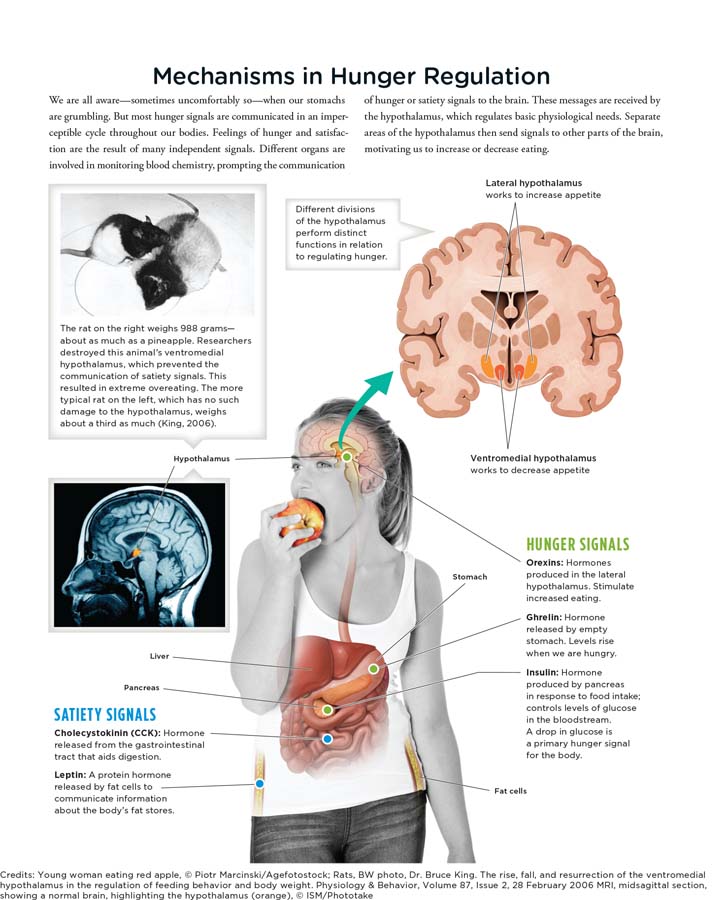Chapter 1. Chapter
Infographic
Scientific American: Psychology
Infographic Activity 9.2: Mechanisms in Hunger Regulation
Mechanisms in Hunger Regulation

We are all aware—sometimes uncomfortably so—when our stomachs are grumbling. But most hunger signals are communicated in an imperceptable cycle throughout our bodies. Feelings of hunger and satisfaction are the result of many independent signals. Different organs are involved in monitoring blood chemistry, prompting the communication of hunger or satiety signals to the brain. These messages are received by the hypothalamus, which regulates basic physiological needs. Separate areas of the hypothalamus then send signals to other parts of the brain, motivating us to increase or decrease eating.
Click the image to enlarge.
Click "Next" to continue.
1.1 Quiz
1. Barbara has developed a small tumor in her brain. As a result, she is experiencing an increase in appetite. Even though Barbara does not need the calories, her brain cannot stop stimulating her appetite, and this has led to unwanted weight gain. Which part of her brain is most likely affected by the tumor?
| A. |
| B. |
| C. |
| D. |
2. Communication about hunger and satiety come from the stomach, fat cells, and gastrointestinal tract to this part of the brain.
| A. |
| B. |
| C. |
| D. |
3. Anthony has had a busy morning, and is starting to feel hungry. Many hormones are responsible for this signaling of hunger. Which hormone is released by an empty stomach?
| A. |
| B. |
| C. |
| D. |
4. Dante has a nice lunch at a local restaurant, and while it is digesting, he considers getting a dessert. However, a hormone that aids digestion also signals satiety, so Anthony pays his bill without eating more. What is this hormone?
| A. |
| B. |
| C. |
| D. |